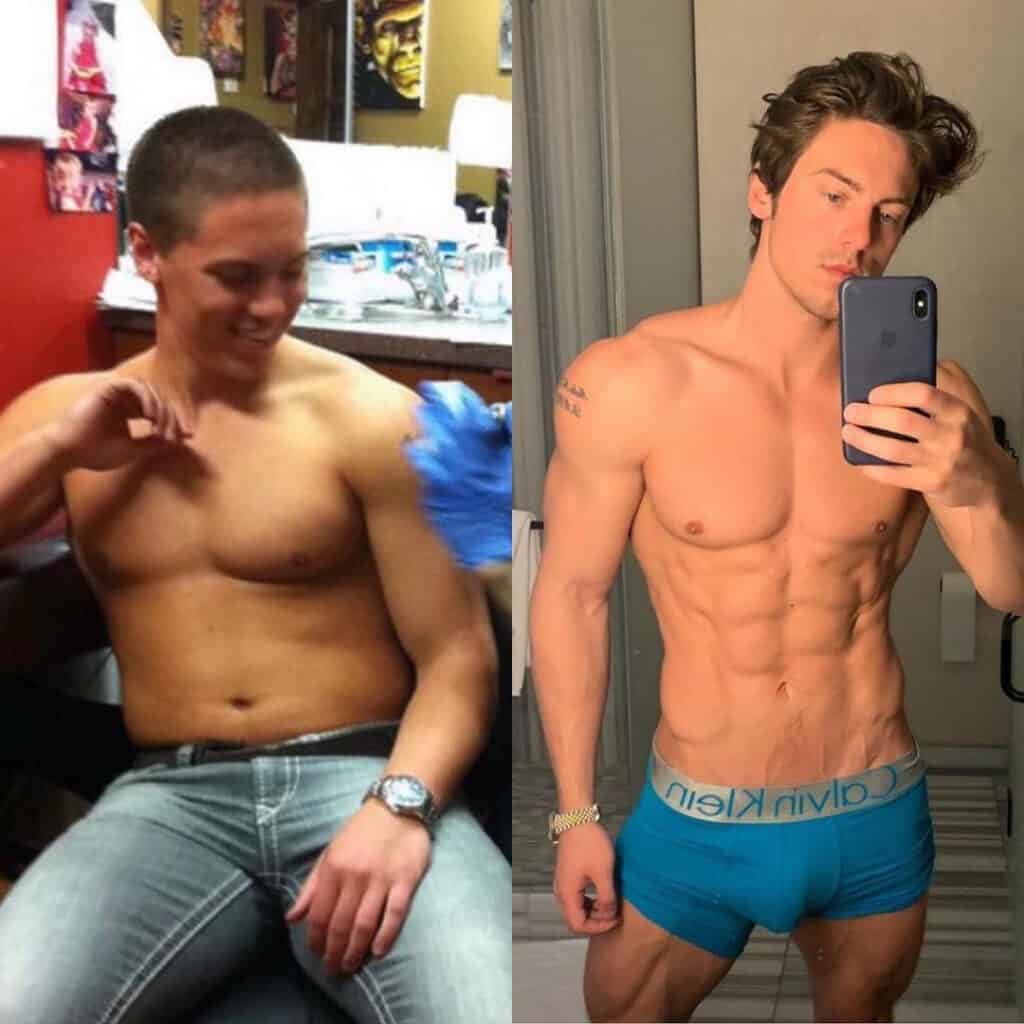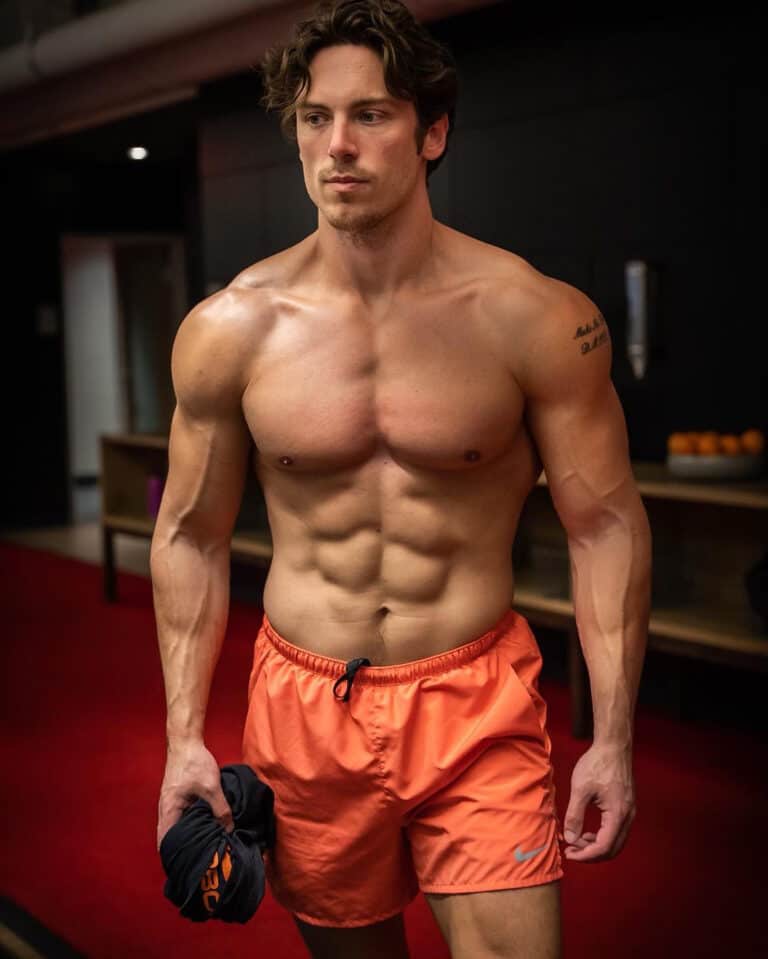In this post, I want to talk about Kinobody vs Leangains and outline the differences and similarities between my intermittent fasting approach with Kinobody, and that of Leangains.
I’ve seen a lot of comments of people saying things like: “Greg O’Gallagher just copied the leangains approach to intermittent fasting. There are no differences.” This can’t be further from the truth!
At the end of the day, of course there are going to be some similarities between fitness figures. And my approach has actually evolved from many different ones.
I learned from guys like Ross Enamait, Joe DeFranco, and Kelly Bagget.
Getting into great shape doesn’t require anything inherently unique.
Now as far as Intermittent Fasting goes, I learned this from one of my main mentors, Rusty Moore.
Which then led me to the work of Brad Pilon and Ori Hofmekler.
And finally, to Martin Berkhan. He did a fantastic job with busting all the B.S myths surrounding Intermittent Fasting.
But there is a lot I agree with and a lot that I disagree with. In fact, I have more differences than similarities with my approach.
Kinobody vs Leangains: Similarities
1) Martin and I both train 3 days per week
Martine created his leangains workout around training 3 days a week and I created my workouts in the same way. Although, neither of us invented this! I was training 3 days per week with strength training and even body weight work outs when I was 13 years old.
2) We both use Reverse Pyramid Training
This style of lifting also dates back way before us. I then took RPT even further with Kinobody and teach how to utilize this protocol to achieve a specific physique.
I also incorporate a lot of Rest Pause Style training, along with isolation movements.
My courses are structured in a way that allows you to make strength gains as quickly as possible.
People following my courses make insane strength gains, especially on upper body movements, which are a lot more difficult.
Building up to a 270 lbs incline bench or 120 lbs weighted chin ups* is a whole different ball game compared to squats and dead lifts.
*Note: Make sure you’re using a high-quality weight belt that won’t cause discomfort or distract you from your training.
3) We both do not recommend doing any cardio
And Martin Berkhan actually inspired me to ditch the cardio.
Kinobody vs Leangains: Differences

1) I don’t recommend very high protein
I recommend 1g per pound of goal bodyweight on the high end, and as of late have been only eating around .82g of protein per pound of bodyweight with no negative side effects. Berkhan usually recommends closer to 1.5g.
Very high protein hampers testosterone production since fat and carbs are the most important macronutrients for promoting testosterone. (Study 1) (Study 2)
When you’re eating at a solid deficit, testosterone is already going to take a hit naturally, and going low in fats or carbs, or both, just makes matters worse.
So why eat so much protein at the expense of fats and carbs?
Besides, if you’re eating two meals per day, you’re already going to be able to eat big servings of protein.
So fullness isn’t an issue. Having more fats and carbs will keep you more satisfied, food will taste much better, and your testosterone will not be compromised.
2) I don’t recommend cycling calories on rest/training days
On a cut, cycling calories just slows down the process.
You have to go into really big deficits on rest days, which sucks.
And on training days, you’re getting yourself used to eating more, which also sucks (making it harder to go lower on the subsequent day).
3) I also don’t recommend low fat on training days and low carb on rest days
If calorie intake is the same, fat loss will be the same.
Going low fat on training days is not ideal. You’re going to be hungrier, testosterone may be impaired, and meal choices are limited.
On rest days, going low carb isn’t as enjoyable. Your mood and sleep can even suffer (Study 3). Besides, potatoes are awesome, one of the most filling foods, and they can be eaten every day.
4) I don’t give a ton of priority on squats and deadlifts
It’s easy to build a good level of leg muscle.
My programs are more focused around developing the ‘Greek God Physique‘.
This requires a big emphasis on incline presses, overhead presses, weighted pull ups, rest pause lateral raises, etc.
There’s leg training of course, but not as much as Berkhan.
I’d rather you be able to have proportionate legs that fit perfectly into a pair of slim fit pants and don’t rub together when you walk. Squats and deads overtime, will build excess mass.
As an added benefit, because you won’t be performing as much taxing squats and deads, your upperbody lifts will go through the roof!
Doing heavy chin ups and standing presses after deadlifts, greatly limits your growth potential, since neurally, you’ll already be destroyed.
As well, I include lateral raises and rear delt work, rest pause style, which has a profound effect on shoulder development. From my understanding, Berkhan leaves these movements out.
5) I don’t use an eating window
The goal is basically to push your first meal around 5-7 hours after rising.
Then you can use the rest of the day to hit your macros.
This is more lifestyle friendly because sometimes it’s hard to finish your fast the same time everyday. Plus sometimes you might get hungrier early, or other times you might get hungrier later.
It’s good to go with the flow of what your body is telling you.
6) I use exercise rotation and micro loading for long lasting strength gains
After several weeks of an exercise your body will begin to get burnt out from the movement. This is when you rotate the exercise to one that still works the same muscle groups but offers a fresh stimulus.
For example, say you hit a plateau on standing overhead press. From there you could rotate to seated dumbbell press. You are still working the shoulders but you are giving your body a fresh stimulus.
When you return to standing overhead press, you will feel stronger and more powerful! Allowing you to make more strength gains and push past that plateau.
Also, micro loading, I would say is the number one driver of insane strength gains! When you get to intermediate and advanced levels of strength, it becomes very difficult to add 5 lbs or another rep.
This is where you add 2.5 lbs per workout with micro loading, allowing you to consistently make strength gains!
7) I incorporated my experiences with Eckhart Tolle into fitness
This has helped me enjoy my journey and put my attention to the very moment I am in now.
Always trying to arrive at your end goal creates stress and frustration. You must enjoy the process for a successful fitness transformation.
I also talk about the importance of building a full and complete life, not just a great body.
Building a great body isn’t enough! Why not go after that business or career, improve your dating life, or work on self improvement?
Fitness should not be your primary goal.
Final Thoughts
I hope the Kinobody vs Leangains distinction is now clear! Yes, there are some similarities but there are also a lot of differences.
I experimented with leangains heavily back in 2012, and found it to be incredibly limiting.
It didn’t provide me with the freedom I was looking for, nor was I able to lean down following leangains.
I had to let go of it, and create something entirely different to reach my goals with ease!
And like the great Bruce Lee said. “Absorb what is useful, discard what is not.”





